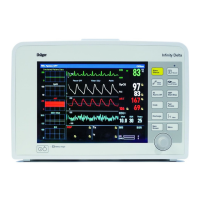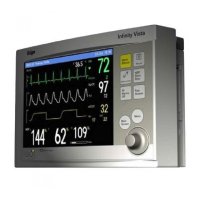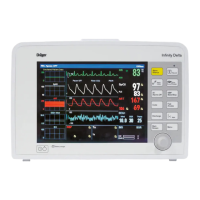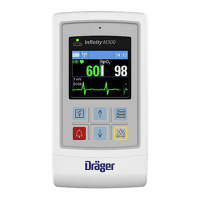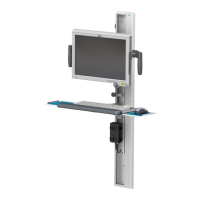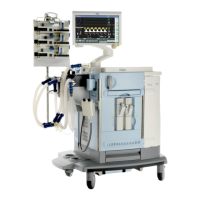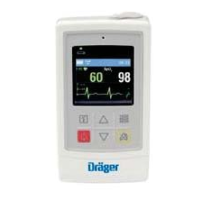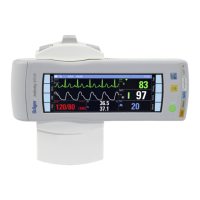9-4 DELTA/DELTA XL/KAPPA VF8
9 A
RRHYTHMIA MONITORING
Automatic Learning and Relearning
After you connect ECG cables to the patient, the monitor begins to learn a reference
template whenever you execute any of the following tasks:
Turn on the monitor
Exit standby mode
Click on ARR Monitoring or QRS/ARR Select
Change the top-channel lead (ECG 1), or change the ECG2 channel lead
during ECG1&2 processing
Change a 12-lead configuration
SVT Supraventricular Tachycardia: N or more consecutive normal beats, with a beat-to-beat
rate greater than or equal to the SVT setting
CPT Ventricular Couplet: Sequence of beats with the pattern: normal, PVC, PVC, normal
BGM Ventricular bigeminy: Sequence of beats with the pattern: normal, PVC, normal, PVC,
normal
TACH Sinus Tachycardia: N or more consecutive normal beats, with a beat-to-beat rate TACH
rate setting
2,3
BRDY Sinus bradycardia: 8 or more consecutive normal beats, with an average rate sinus
bradycardia rate setting
2
NOTES:
• When in neonatal mode, bradycardia is a low heart rate alarm
.
• Brady Alarm (neonate only), which is a high alarm, can be configured independently of
the low HR alarm, which is a medium alarm.
PAUS Pause: Sequence of two beats classified as normal or PVC, with interval pause rate
value in seconds (±100ms)
ARTF Artifact: More than 50 % of beats in the last minute classified as questionable
1
Certain ventricular tachycardias have sinusoidal waveforms closely resembling those of
ventricular fibrillation. Because of the similarity of these waveforms, the monitor may classify
such types of ventricular tachycardia as ventricular fibrillation, the more serious of the two
conditions.
2
“N” is the event count set in the Arrhythmia setup table’s count column.
3
A PVC or other abnormal beat breaks the analysis sequence and restarts analysis.
Label Event and Beat Classification

